Best Electric SUV: Testing 8 New EVs

Co-Written by Kyle Patrick
The world of electric vehicles can be confusing for first time buyers. New vehicles are being introduced all the time with unusual names. Just about every major auto manufacturer has joined the party, and in a variety of sizes.
To help consumers sort through the various offerings, we’ve gathered eight all-electric mainstream SUVs. Instead of our usual head-to-head comparison, we’re offering more of a segment overview as to what each of these options bring to the vehicular table.
After we've discussed the pros and cons of all eight vehicles, we'll conclude with what our overall best recommendations are. Here now is the Best EV SUV comparison feature, brought to you by Weathertech.
2023 Ford Mustang Mach-E
Words by Mike Schlee
Is the world ok with calling this a Mustang yet? Maybe not, but as hard as it is to believe, the Ford Mustang Mach-E is one of the oldest entries in this comparison feature. With the Niro and ID.4 getting recent refreshes, this is now a senior citizen at the ripe old age of three.
Those who live by the phrase bigger-is-better, should appreciate the Mach-E. It’s the biggest vehicle on hand here with the biggest battery, biggest driving range, biggest horsepower, biggest screen, and of course, biggest price tag.
Style for Miles
Besides big, funky is another word that describes the Mustang Mach-E. Look at the door handles inside and out. They’re some of the most unusual designs and although the exterior ones have yet to grow on us, we do like the interior toggle-like handles. The overall styling is also quirky with the stretched, enlarged Mustang pony car cues front and rear. It may not be everyone’s taste, but it has grown on us.
The cabin is one of the most spacious feeling in this comparison feature, and the large glass roof provides a ton of head room. Front or back, these are some of the most comfortable seats on hand here. The Mach-E is a vehicle that adults should have no complaints riding in the rear seats.
Plenty of Powertrains
The Mach-E can be had with rear or all-wheel drive, and a choice of battery sizes as well as power levels. Our Premium test vehicle has the dual motor all-wheel drive system that Ford claims can go from 0 to 60 mph in less than five seconds. Remember, this isn’t the sporty Mustang Mach-E GT, this is just a regular all-wheel drive model.
As the only vehicle with a battery over 90 kW, it’s no surprise the Mach-E has the most range, at 290 miles (467 km) between charges, even with two motors and 346 total horsepower. That big battery can recharge at speeds up to 150 kW which is impressive, but still slower than the batteries found in the Kia, Hyundai, or Volkswagen.
Premium Comes at a Price
There’s this overall refined feeling to the way the Mach-E drives that is lacking in some of the other vehicle’s here. Beside amble power, the vehicle is smooth on the road, isolating sound, and absorbing bumps. It can’t match the Ioniq5 and EV6 in terms of handling and control, but the Mach-E is more composed through corners than the Ariya or ID.4. Maybe it’s the high curb weight, but the vehicle feels more solid and more premium than much of the competition. That’s probably why it’s also the most expensive.
Why on the topic of that high price tag, it’s no surprise the vehicle comes well equipped. Included are the fixed glass roof, smart lift gate, rain sensing wipers, that massive 15.5-inch infotainment screen, a B&O audio system, wireless phone charging, and Ford’sBlueCruise 1.2. It's also one of the only vehicles with a front trunk.
So, is the Mach-E still one of the most appealing mainstream all-electric SUVs? It appears so, but let’s take a look at what else is now available to see how the Ford stacks up.
2023 Nissan Ariya
Words by Mike Schlee
At the other end of the age spectrum is one of the newest entries on the market, the Nissan Ariya. As the brand’s second all electric vehicle, the Ariya may look big on the outside, but it’s a bit of an optical illusion. The vehicle is actually a bit smaller than the brand's compact-ish Rogue SUV. Inside though, it doesn't feel like it.
This has to do a lot with clever packaging that can only happen with EVs. There is a nearly flat floor front and rear that gives amble legroom and an airy, van-like feeling. It allows occupants to move between the driver and passenger seat without having to exit the vehicle, if that's ever needed for whatever reason.
Useful and Gimmicky Features
Headroom is generous and the bubbly, maybe jellybean inspired, exterior allows for large windows, that along with the panoramic sunroof, lets a lot of light inside. Like most vehicles here, there are dual screens on the dashboard, measuring over 12-inches each here. But unlike most of the other EVs, there are also dual glove boxes, a power adjustable center console, and geometric ambient lighting.
While on the topic of features, our tester also includes the around view monitor, a rear-view mirror camera, wireless phone charging, heated rear seats, wireless Apple CarPlay and Android Auto, rain sensing wipers, head up display, and much more.
The heated, dual power front seats are comfortable, rivalling that of the Mustang Mach-E. But we can’t review the Ariya without discussing the haptic controls built into the fake wood trim. In practice, they mostly work as intended. Are they as functional as a push button? No. But they do look much cooler and more futuristic.
The Choice is Yours
Like the Mustang Mach-E, the Ariya is available with various drivetrains and battery sizes. Unlike the Ford though, the Nissan is front wheel drive when opting for a single motor. For this feature we have a ully loaded version of the front drive model with the larger battery. This gives the Ariya the second longest as tested range of 289 miles (465 km) on a charge, just 1 mile shy of the Mustang Mach-E.
There is no front trunk on this vehicle as the electric motor sits under the hood making 238 hp. Although more powerful all-wheel drive versions of the Ariya exist, this has all the power one needs as city and highway acceleration is more than adequate.
Comfort is King
Ride comfort is good, and the entire vehicle is well sorted in terms of dynamics. It accelerates, steers, and stops predictably, feeling more like a regular SUV than many others in this test. One quirk has to do with braking. When coming to a complete stop, the Ariya rocks front to back a few more times than we're to use to. It’s not a deal breaker, but noticeable.
Pricing for the Ariya spans a big range depending on configuration. More or less, it matches up with the Mustang Mach-E, EV6, and IONIQ5. Unlike those three, the Ariya is focused more on being a comfy family EV SUV instead of one with a performance edge. It succeeds here and is a good option for those looking for something more about comfort than performance.
2023 Hyundai Ioniq 5
Words by Kyle Patrick
I don't need to tell you how we're fans of the Ioniq 5 here at AutoGuide. Hyundai's retro-futurist darling has scooped up awards left and right since it debuted, including from us. But like the Mach-E, the the Ioniq 5 has found itself quickly becoming one of the elder statesmen in this fast-paced scene, so we had to revisit one of our fave EVs to see if it still shines.
Style leader
One thing's for sure: those looks haven't aged a bit. The Ioniq 5 is still one of the most eye-catching designs on the road, at any price. The best way to describe it? A 2020s rendition of what everyone in the 1980s thought 2020 would be like. Hyundai's pixel light designs, from the square headlights to the rear light bar, are just the right amount of retro cool. We also like the funky wheelarches, modelled after a camera's aperture. Sitting just-right inside them are intricate, basket-weave-style 20-inch alloys; they're more straight-up '80s design than anything else.
The cabin is a big departure too, not just from the rest of the Hyundai lineup but the other EVs, too. It's a bright, airy, lounge-like space, all light colors but still managing to feel warm and inviting. The Ioniq 5 goes the extra mile with unique details too, like the model-specific wiper and shifter stalks. The sliding center console is a fun party piece, allowing for a welcome pass-through up front. But the trade-off is a feeling of flimsiness.
Strong performer
It isn’t all style over substance, either. The Ioniq 5 is one of the more powerful offerings in this group, throwing down 320 horsepower and 446 lb-ft of torque via its dual-motor, AWD setup. Hyundai offers a rear-drive model too, with either the 77.4-kWh battery pack tested here, or a smaller one for a more affordable price. Unlike the Nissan, you can't mix-and-match batteries and drivetrain layouts, however.
The Ioniq 5 is a well-rounded performer, landing right in the middle of this group. It's not as sporty as the Mach-E or its Kia sibling, but can be more fun than the German and Japanese options. The Ioniq 5 is quiet and composed on the highway, though the wide rubber makes for more tire noise than you may expect. We also like the different regenerative braking options: Mike's a traditionalist, while I like full one-pedal, and the Ioniq caters to us both.
Hyundai's EV is quick in other ways, too. With the fastest charging speeds of the whole pack, it can recoup lost electrons at an astonishing rate. I saw a best of 56-percent battery capacity in just 13 minutes.
Not cheap, but good value
This is one of the pricier options here, but in typical Hyundai tradition, the Ioniq 5 comes loaded up on the features. The infotainment screen is large and relatively easy to use—even if seat temperatures are buried in a sub-menu. The full-recline front seat is great for those needing a power nap. We have to give points to the useful head-up display, which features augmented reality navigation instructions. Of course, there's also a whole gaggle of driver assists, from lane-keep, full-range adaptive cruise control, a 360-degree camera (with Blind-Spot View Monitor), and more. On the flip side, the Ioniq's audio system is nothing to write home about, and the USB-A ports feel old-fashioned—especially when you see a cord dangling under the dashboard for phone pairing.
That all said, the Ioniq 5 remains a super-impressive all-electric family car, one with a standout design, plenty of useful features, and relatively approachable price tag. No wonder wait lists are still lengthy.
2023 Kia EV6
Words by Kyle Patrick
Let's be honest here: while these are all technically SUVs, none are really the sort you'd be taking off-road ( well, maybe not). So the Kia EV6 just leans its role: this is basically a wagon. Except nobody likes to use that word. Whatever you want to call Kia's first dedicated electric vehicle, one thing's for certain: it makes a statement.
That low-slung shape, chopped tail, and aggressive front-end pitch the EV6 clearly into the "sporty" section of this octet, more so even than the car that stole its name from a muscle car. Under the skin it's technically almost identical to the Hyundai Ioniq 5, but out here in the real world, the Kia has some clear advantages—and a few trade-offs.
Space-age cabin, light on space
Pop the flush-fitting door handle and the EV6's cabin is a whole different ball game from the Ioniq's. It's low-slung. It's dark. There's a distinct cockpit-like feel. Sure, the angular dashboard design and semi-floating center console combine to make the Kia feel tighter than the lounge-lizard Hyundai, but how about that sense of occasion?
Yeah, it's just tight in here. The EV6 has the least headroom of the group, so taller folks will feel cramped, especially in the back seat. Further compounding matters is the lack of a glass roof, a la Ford, Hyundai, or Volkswagen. The Kia doesn't make up for this with tons of storage space either; like the Hyundai, it barely has a frunk.
Once you get comfy, you can appreciate one of the finer-detailed cabins in the EV space. Kia has used a lot of different textures and patterns to spruce up the EV6's dark cabin, and it adds up to a premium feel. We also like the grippy and comfortable seats, which prove supportive on longer drives.
The driver's choice
The EV6's powertrain options mirror the Ioniq 5's: two different battery choices, with the larger capacity option coming in rear-drive single-motor and all-wheel drive dual-motor configurations. There's a lot of get-up-and-go here, and the Kia's lower curb weight only enhances that. Pitch it into a corner and the EV6 is genuine fun. There's no real trade-off during regular driving either, with a well-planted and altogether comfortable city and highway demeanor. If you're looking for even more power, Kia will sell you the ballistic 576-horsepower EV6 GT.
Like the Hyundai, there are five different levels of regenerative braking, ranging from barely-there to full one-pedal driving. And speaking of charging, it too is capable of rates over 200 kW on DC fast-chargers. The Kia's range is an okay 252 miles (406 km); opting for AWD knocks a lot off the top. That being said, during our tests, the EV6 comfortably beat its official figures.
Premium product, premium price
Kia doesn’t price the EV6 like the bargains of old, especially in Canada. This is the second-priciest car here. It does come very well-equipped, however, with those twin 12.3-inch interior screens, 360-degree camera, remote parking assist, and second-row heated seats. The latter is one of its few creature comfort advantages over its sibling.
In case it hasn’t been clear: the EV6 and Ioniq 5 offer two different flavors of EV. The Kia is a much sportier proposition, sacrificing ultimate space for a low-slung, engaging driving experience. Of the group, it’s the sports car; a sign of how broad the category has become.
2023 Mazda MX-30 EV
Words by Mike Schlee
For those that live in a moderately sized city and just need an EV for a short commute to and from work, maybe something the size and/or price of the Mustang Mach-E is a bit much. Maybe something like the much more affordable Mazda MX-30 EV would be the perfect fit.
With an as tested price of $38,495 ($49,645 CAD) including destination charges, it’s nearly eight thousand dollars cheaper than the next most affordable option here. That’s because unlike the other options in our feature, the MX-30 is more of a city runabout.
Small Size, Small Power, Small Range
With 143 hp sent to the front wheels, this is by far the least powerful vehicle here. Even with a relatively low curb weight, the MX-30 feels the slowest, especially on the highway. Around town there is a decent amount of torque, but the Mazda never feels fast.
After all, this is more of an around town commuter, with a mere 100-mile (161 km) maximum range. Yup, just 100, which should be expected for a vehicle with a battery that’s less than half the size of some of the others on hand here. Charging? Also, the slowest in test. But being such a small battery, fully recharging it doesn’t take long. We also need to mention that during our testing. the MX-30 EV was exceeding the quoted range by 10-20 miles (16-32 km) regularly.
Cool Looks, Surprisingly Practical
The MX-30 has a funky shape as it’s a two door SUV with a set of half-doors that open opposite of the fronts, much like the old RX-8. Rear seat space is easily the tightest in the group and the tiny windows do make it feel a bit claustrophobic back there. That stated, adults as big as six-feet tall do fit in the rear seat and should be fine for shorter drives.
Back up front there are three screens including one dedicated for the climate control. The CX-30 is quite well equipped, with a Bose sound system, around view cameras, rain sensing wipers, moonroof, a head-up display, and all the usual safety systems. We also really like this cork-board interior trim found on the center console.
Agile and Comfortable
On the road the MX-30 drives a lot like Mazda’s other small SUVs, just a bit softer and with slightly more road noise. The fun responses of the CX-30 aren’t present here, but the MX-30 is still easily one of the most agile vehicles in our feature, thanks to the small wheelbase and low curb weight. Another plus is the ride comfort, which is better than some of the brand's other SUVs. We also like that the paddles shifters allow us to adjust through five levels of regenerative braking like the Korean entries.
There is a pretty big side three-quarter blindspot though and we really do wish the MX-30 EV had a bit more power and twice the range. We quite like everything else about this funky, alternative small EV and it should work for some commuters. But it could be perfect for so many more couples and small families, if it just had a bigger motor and bigger battery.
It really is a bit too niche, and that’s probably why the MX-30 is being discontinued in the United States. So if this fun, affordable, short-range EV is something you’re considering, better act quickly. For our Canadian viewers though, the MX-30 is living on into at least the 2024 model year.
2023 Kia Niro EV
Words by Mike Schlee
If the Mazda MX-30 sounds a bit too compromised, then the Kia Niro EV is worth a look. It has more power, more space, more features, and most importantly, more range. It obviously costs more money too, but as the third least expensive vehicle here, it’s still a bit of a bargain.
With an as tested price of $47,175 ($55,994 CAD) including destination charges, in true Kia tradition, the Niro EV comes with a lot of features. To start, there are double digital screens up front, each over 10-inches in size. Both the driver and front passenger get heated and ventilated power seats while the two outboard seats in the rear also get heating. It has head up display, a Harman Kardon audio system, power tailgate, rain sensing wipers, a wireless phone charger, and more. Heck, it’s even possible to park the car without anyone in it.
Single Powertrain
Power comes from a single motor driving the front wheels that makes 201 hp. This may have the least amount of torque in the group, but in sport mode there's no lack of power. In the regular modes though, it does feel a bit slower than more expensive EVs.
With a nearly 65 kWh battery, the Niro is rated to go up to 253 miles (407 km) on a single charge. That’s more than the Toyota bZ4X and even one more mile than the Niro’s bigger sibling we have here, the all-wheel drive EV6. Charging speeds are a bit less impressive as the Niro can only muster a max speed of 85 kW. Although that’s more than enough for older 50 kW stage three chargers, it’s still the second lowest in our test.
A Real Lightweight
Speaking of low, being a smaller vehicle with a single motor, the Niro EV weighs a lot less than everything here outside of the MX-30 EV. At 3,712 pounds (1,688 kg), it’s over 1,000 pounds (454 kg) lighter than the Mustang Mach-E and ID.4.
The lower weight leads to a better driving vehicle that’s more agile and grips better in corners. With eco-focused, high sidewall, skinny 17-inch tires, it’s not exactly as engaging to drive as the Kia EV6 or Hyundai Ioniq 5. But, it’s also not a lumbering monster compared to some of the heavyweights electric vehicles on hand here.
Packaging Marvel
Back to the Niro’s size, it’s smaller than most of the EVs in this comparison feature as only the Mazda is smaller. It’s a bit of a packaging marvel though. Ignore the official numbers for rear seat space as full grown adults fit back there with plenty of legroom and decent headroom. The cargo area has a deep, large area that’s rated the same size as the Nissan Ariya’s.
Overall, the Niro is a great package. With Kia’s usual layout, the interior feels more premium than some others here, even though its priced lower. On the downside, there is no all-wheel drive option, road noise is very noticeable behind the wheel, and there is no frunk. Ignore all that though, and this is a solid choice for the first time electric vehicle buyer.
2023 Volkswagen ID.4
Words by Kyle Patrick
Up until this point, just about everything here trumpets its electrified nature. That’s fine: for some, that’s the point. Those looking for an experience closer to their existing gas-powered SUV will want to check out the Volkswagen ID.4.
The ID.4 is broadly similar in size to the Tiguan, and like the Hyundai and Kia, offers two different battery capacities, the larger of which provides the option of AWD. That’s the one we have here, capable of up to 255 miles (410 km) on a single charge; depending on trim, the ID.4 is rated anywhere from 200 to 275 miles (336 to 446 km).
Comfort first
We’ve got two words for you: massage seats. The VW’s got ‘em up front—the only car here to do it—and that sets a clear tone for this comfy five-seater. The ID.4 is shorter than all but the Niro and MX-30, yet it has a spacious and inviting cabin. Yes, the big glass roof helps, but the excellent blue-and-white color combo deserves some credit, too. The VW’s relatively low beltline makes it easy to see out of, with a clear idea of exactly where the ID.4’s extremities lie.
The ID.4 rolls along the road with minimal fuss, too. This is one of the softer-riding vehicles here, soaking up bumps and keeping road noise at a minimum. The driving position is upright, giving the VW more of an SUV feel. This dual-motor model has a competitive 295 hp, though 339 lb-ft is significantly less than what you’ll find in the EV6 or Mach-E. What that means is power delivery more in-tune with, well, a Tiguan. Okay, more like an Atlas.
Infuriating tech
It's time to address the 800-pound electric gorilla in the room. While the ID.4's cabin design is sweet, the central touchscreen is cumbersome and aggravating. The basic menu layout is fine enough, but there's some lag on many of the screens and the sub-menu hierarchy isn't the clearest. I'm more annoyed with the non-illuminated touch controls for the climate; did nobody ever test this at night? And the switch to operate either the front windows or the rears, but always independent of each other? Why?!
It's not all bad. The little screen for the instrument cluster is crisp, and since it moves with the steering column, it's always in view. You get used to the shifter mounted on its side, too. I also like the light bar at the base of the windshield, which illuminates in response to driver assists and to register your "hey ID" voice assistant commands.
Affordable and locally-sourced
The VW has a few other tricks up its sleeve. It's downright affordable in its base form, undercutting everything except the pint-sized Mazda. That's thanks to the new local production facility in Chattanooga, which makes the ID.4 the only model in this collection to be built in the US (the Mustang hails from Mexico). The ID.4 also has the most trunk space. If you're the type that regularly makes use of DC fast charging, the ID.4's 170 kW cap is bested only by the Ioniq 5 and EV6.
Overall, the word we kept coming back to with the ID.4 was "normal." Well, beyond those window and climate controls, anyway. VW's electric model is a well-mannered, well-insulated compact SUV that doesn't ask its owners to make any big changes to their daily routine. With the increased availability of the local production, that makes the ID.4 a very appealing choice.
2023 Toyota bZ4X
Words by Kyle Patrick
When I first drove Toyota’s bZ4X—or busy forks, if you’re trying to remember the name— I called it the RAV4 of the EV world. That's still true over a year later, in the EV's size, demeanor, and placement within its own segment. And what's wrong with that, anyway? The RAV4 is the best-selling compact SUV there is: forget the ID.4, this is capital-N Normal.
It doesn't look it, though. The bZ4X is a strange mix of recognizeable Toyota cues, but all jumbled together. There's the tall nose of the RAV4, but with the face of the Crown grafted on. The plastic cladding that marks this out as an SUV seems to be spreading. While the design has plenty of soft curves, the tailgate is all hard angles, so the entire shape can be pretty jarring.
Stand-out interior
The cabin of the bZ4X bucks traditional styling trends too, but does it in a much better way. Instead of the staid RAV4 cabin feel, the bZ4X has a low-profile dashboard with wraparound design. Instead of being a loaded trim like most of the other testers here, the Toyota is a more reasonable XLE. That translates to artificial leather seating with fabric inserts, the latter of which also covers the dashboard. It's a welcome play on texture, and plays well with the leg-warming "radiant heat" feature. The pattern of the fabric continues on in other areas of the cabin, too.
Our favorite feature is certainly that deep-set instrument panel, however. Not only does it look futuristic, it allows drivers to drop the wheel as low as they'd like. Plus, no need for a head-up display!
'Tweener Toyota
While the Toyota is very nearly the longest car here, it consistently scores near the back of the pack in terms of interior space. In fact, even the Niro beats it on all but front legroom. At least the big panoramic roof lets a lot of light in. Seat comfort is pretty good, and you get the feeling that fabric will last approximately forever. The XLE eschews any sort of power seating adjustments, mind you.
Similarly stingy: no rear-seat climate controls. Toyota's latest infotainment system is a good one, with easy-peasy menus. You won't find navigation here though, requiring a subscription should you change your mind. Luckily both Apple CarPlay and Android Auto work wirelessly.
The most SUV-like
The bZ4X is the least-powerful AWD model here—and even the front-drive Ariya posts better numbers. It also has the lowest range... and if you're road tripping, each stop will take more time. That's because the AWD bZ4X is capped at 100 kW on fast chargers, and those speeds slow down as the temperatures dip.
Don't write off the Toyota yet, though. It's comfortable, and one of the least expensive AWD EVs out there. It also has the most ground clearance, and with its X-Mode drive selector, offers the heartiest choice for folks looking to explore nature in near-silence.
The bZ4X makes more sense in its more affordable guises. It can't match the fanciness of many of the others here, nor their range, but as an honest, rugged EV, it checks a lot of boxes.
The Verdict: What Do We Recommend?
After spending a week driving all eight vehicles back-to-back, a few really stood out from the crowd. Kyle really appreciates the Hyundai Ioniq 5. He loves how it looks as well as how it drives, and it comes jam-packed with plenty of smart, useful tech and features.
Mike drew a similar conclusion, but is a sucker for wagons, so his pick is the long-roof Kia EV6. Other than the lack of front headroom, there isn’t much we'd change with the vehicle. He also quite likes the Ford Mustang Mach-E, as the brand has done a great job with the overall packaging and vehicle dynamics.
Our final recommendation is for the Kia Niro EV. If all-wheel drive isn't absolutely required, the Niro EV is something of a bargain and a packaging marvel. For those looking to take their first foray into the world of electric vehicles, it would be a great choice.
Become an AutoGuide insider. Get the latest from the automotive world first by subscribing to our newsletter here.
Find everything you need for your car from WeatherTech.

A 20+ year industry veteran, Mike rejoins the AutoGuide team as the Managing Editor. He started his career at a young age working at dealerships, car rentals, and used car advertisers. He then found his true passion, automotive writing. After contributing to multiple websites for several years, he spent the next six years working at the head office of an automotive OEM, before returning back to the field he loves. He is a member of the Automobile Journalists Association of Canada (AJAC), and Midwest Automotive Media Association (MAMA). He's the recipient of a feature writing of the year award and multiple video of the year awards.
More by Mike Schlee



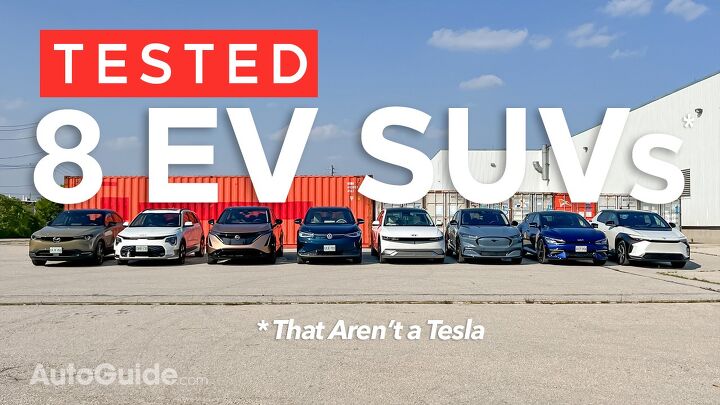

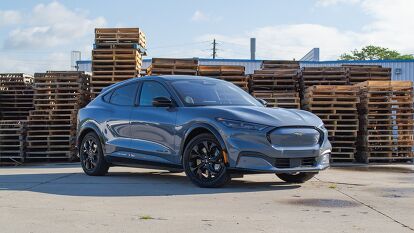




















































































































































































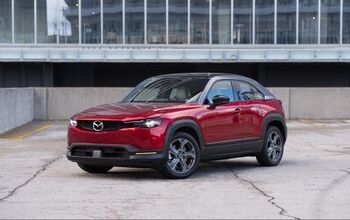

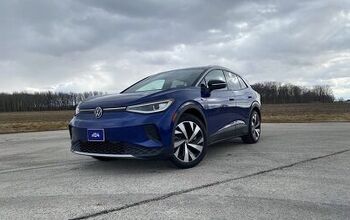


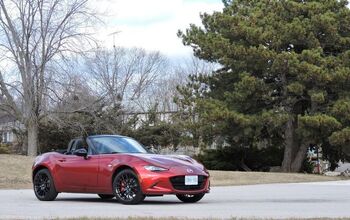


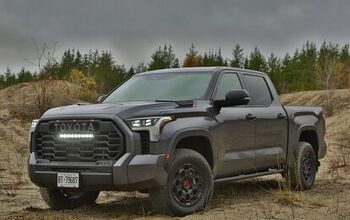
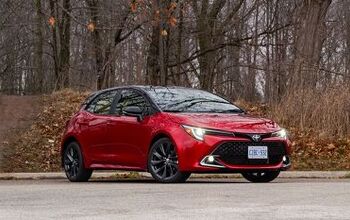
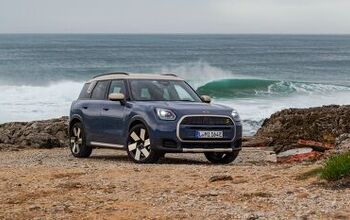
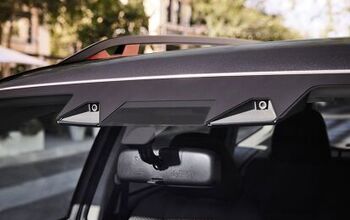

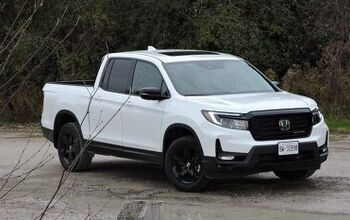
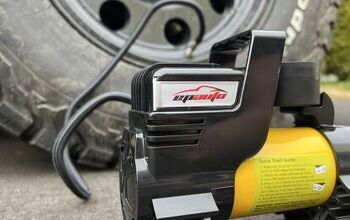


Comments
Join the conversation
Sorry if I missed it
But when you are testing real worl EV RAnge are you taking it form 100% down to 0% or are you
really only using the Reccomended 60% High Speed (level 3 and Above) Charging range from 20-80%??